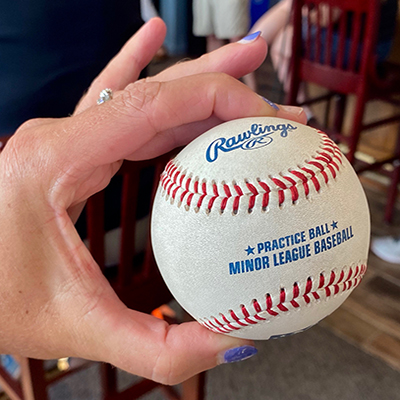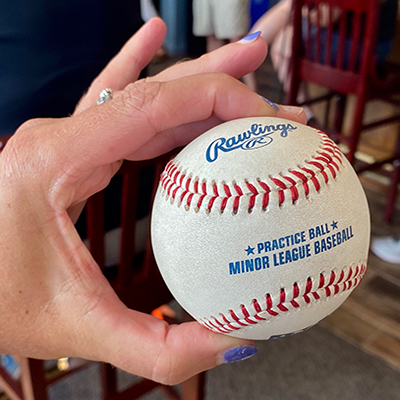
### The Enchantment of Baseball’s Rubbing Mud: Scientific Discoveries from University of Pennsylvania Researchers
For almost a hundred years, Major League Baseball (MLB) pitchers have depended on an enigmatic substance: **rubbing mud** sourced from a concealed river site in New Jersey. This seemingly unremarkable material has steadily played an essential role in improving grip and control of baseballs during professional competitions. Recently, an innovative study conducted by researchers at the University of Pennsylvania has illuminated the unique characteristics that make this mud exceptional, providing a captivating insight into its fluid mechanics and prospective future uses.
#### The Science Behind the Mud
In a study spearheaded by **Douglas Jerolmack**, a geophysicist at the University of Pennsylvania, researchers scrutinized the composition and mechanical features of the renowned rubbing mud. Their results indicate that the mud is a sophisticated mixture of precisely balanced constituents: *clay, silt, sand, and organic matter*.
– **Clay and Silt**: These components contribute to the smooth, tacky consistency of the mud, enabling it to spread evenly across the surface of the baseball.
– **Sand**: Minuscule sand particles function as a gritty agent, adding friction that assists players in maintaining a firm grip on the ball.
– **Organic Matter**: It probably plays a role in the cohesive nature that unites the clay, silt, and sand into a paste that players can apply to the baseball.
This distinctive combination produces a material that “flows like skin cream but grips like sandpaper,” enhancing pitchers’ control and optimizing their performance on the mound.
#### Rheometers and Tribometers: How Scientists Measured the Mud’s Properties
To explore the mud’s behavior further, Jerolmack’s research group utilized advanced scientific instruments, such as a **rheometer** and a **tribometer**. These tools enabled them to investigate the mud’s properties at the microscopic level, evaluating both its fluidity and grip-enhancing features.
1. **Rheometer**: A rheometer consists of two rotating plates with the mud placed between them. The researchers utilized this device to determine how effortlessly the mud spreads. The results indicated that the clay and silt constituents are crucial in rendering the mud smooth and easy to apply. When rubbed on a baseball, it results in an even, uniform layer on the leather’s surface, filling small pores to produce a superior, more controlled texture.
2. **Atomic Force Microscopy**: To comprehend the adhesive properties of the mud, the team employed atomic force microscopy, a method that examines surface textures at the atomic scale. This microscopy illustrated that the mud leaves a thin sticky layer on the baseball. This adhesive coating provides the perfect degree of surface tackiness for pitchers to retain control during the swift and potent movements they perform in real-game situations.
3. **Tribometer**: The team advanced by developing a custom device known as a tribometer to replicate the friction experienced by human fingers gripping the mud-covered ball. This device validated that the rough sand particles within the mud enhance friction, offering up to *twice the grip* compared to untreated baseballs. This attribute is vital for enabling pitchers to achieve better finger control, particularly while throwing fast pitches or precise curveballs.
#### Why MLB Continues to Use Rubbing Mud
Despite the rise of several synthetic alternatives, none have equaled the perfect blend of friction, texture, and grip found in New Jersey’s enchanting mud. MLB has sought to investigate substitutes, aiming to ensure fairness and standardization across different games and environments, but with little success. According to Jerolmack’s findings, the mud’s natural combination of materials, refined by natural forces, outperforms any artificially created substitute.
One factor noted for its effectiveness is the *sustainability* of the mud supply. The unique location in New Jersey is continually replenished by the river’s tides, resulting in usage that is both environmentally friendly and economically viable. Additionally, only small amounts of the mud are required each season, ensuring minimal ecological impact.
#### Earth-Inspired Materials: Possible New Applications
Beyond the realm of baseball, the research implies broader technological uses for the mud’s blend of sticky and gritty properties. The characteristics of this mud could inspire the creation of new, eco-friendly materials across various industries. For instance, researchers from the University of Pennsylvania suggest it could function as:
1. **Friction Agents**: The mud’s capacity to enhance traction positions it as a promising candidate for improving grip on slick surfaces, such as in tires or footwear.
2. **Sustainable Construction**: Its cohesive attributes could render it beneficial as a *natural binding agent* in eco-friendly construction materials, decreasing reliance on synthetic chemical adhesives that can be detrimental to the environment.
This “magic” rubbing mud, once confined to a specific role in baseball, may soon lead to a variety of innovative products designed to leverage its naturally occurring mixture of friction-enhancing and adhesive qualities.
#### A Glimpse
